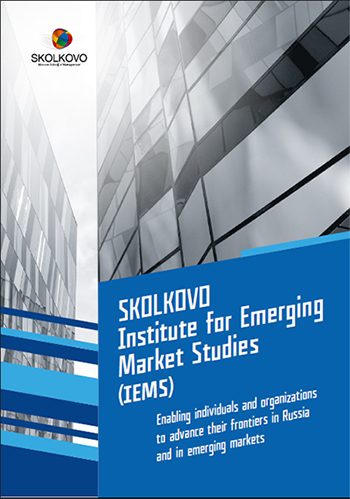Moving Towards the Mainstream: stock market development and performance in the rapid-growth markets
Equity markets in emerging economies to experience significant growth in next decade. Emerging market capitalization could account for half of the world total by 2020.
In under a decade, equity markets in the emerging world have flourished and become critical sources of finance for emerging markets (EM) businesses according to Ernst & Young’s Moving towards the mainstream report, produced in collaboration with the Institute for Emerging Markets Studies - Moscow School of Management.
Equity markets in EM economies have surged at a breathtaking speed in the last decade. After hovering around 20-25% of GDP for most of the 1990s, EM’s stock market capitalization, as a share of collective GDP, has strongly increased from 2000 to 2007. From late 2007, the global recession caused a sharp correction in EM share prices that continued throughout 2008. There was a recovery in 2009 and 2010 and since then collective capitalization ratio (stock market capitalization as a share of GDP) for developing markets has been around 40%.
The total market capitalization of EM countries has increased approximately tenfold over the past 15 years: from less than US$2 trillion in 1995 to about US$5 trillion in 2005, to approximately US$13 trillion by the end of 2011. By comparison, over the same period, total market capitalization in developed markets has only doubled. Since the beginning of the 21st century, the EM’s share of global stock market capitalization has risen from 7% to a current figure of approximately 30%.
In the future, even if emerging market capitalization only grows in line with GDP, by 2030 it could account for as much as half of the world total. However, this could happen as soon as 2020 if the markets develop with greater speed as there would be increased equity issuance and a higher number of initial public offerings.
EM stocks have been able to offer significantly higher average annualized returns than developed markets over the last 25 years – particularly when emerging nations have enjoyed strong economic growth.
Alexis Karklins Marchay, Co-Leader of the Emerging Markets Center at Ernst & Young comments:
“With the origins of the recent financial crisis in the developed world, relative risk perceptions have been rapidly changing. It is believed that with many of the developed economies coming out of the crisis with significant private and public debt levels, emerging markets might now be relatively less risky; for the first time, all BRIC countries currently possess investment-grade sovereign debt ratings.”
Due to the perceived volatile nature of the markets, EM equities have always sold at a discount in comparison to developed market equities. During the past decade, however, the price-to-earnings ratio gap between emerging and developed markets has largely dissipated.
Challenges for investors
The main challenges for investors in EM stock markets have been variation and volatility. EM markets have proved to be much more sensitive to global economic forces than developed markets and have offered significant variation in returns. Markets in emerging nations are generally riskier than those in developed nations and volatility is a real problem for the investor. However, despite the high volatility, EM markets offer diversification benefits through exposure to different economic sectors and different stages of the business cycle.
Alexis continues, “Investors should bear in mind that they are not buying into growth, but purchasing real companies whose returns may or may not correlate with national economic performance. The Russian stock market returned approximately three times more than China’s, but only generated half the per capita growth. In fact, China has experienced faster growth than any other RGM economy, yet its equity returns were comparatively low versus the other among the BRICs last decade.
South Africa and Brazil grew at half the rate of India last decade, but offered approximately equal equity returns. Indonesia also provided vastly disproportionate returns (ranging from 3.8% to 21.4% equity return) while Colombia’s superior equity returns were met with relative lackluster per capita income growth.
The distribution of equity capital in the emerging world is also uneven, with the BRICs plus South Africa and South Korea accounting for approximately 70% of RGMs’ total equity capitalization.
Investing in EM stock exchanges still requires prudence
Investors should remain cautious when investing in EM stock exchanges, as EM equities no longer appear to be the bargain they were a decade ago. The developing market story is largely reflected in share prices, which is why price-earnings multiples are close to parity with developed markets stocks. Alexis comments, “Today, EM stocks are increasingly becoming mainstream options for global investors. This interest will only increase as developing economies grow and their financial markets become more integrated with those in the developed world. Though in the past emerging markets rarely soared for very long before faltering, economic growth could remain much stronger in the EM economies relative to the developed world for many years to come. It is possible that the emerging economies have finally got it right and that it is reasonable to expect the higher equity returns of the last decade over a protracted period.”
Download Moving towards the mainstream or view this research report (and others) directly on Ernst & Young's Emerging Markets Center website.
Contact us
-
SKOLKOVO IEMS
+7 495 539 30 03
SKOLKOVO Sustainable Business Center monitoring
Leave your contact details and we will send you our monthly monitoring



